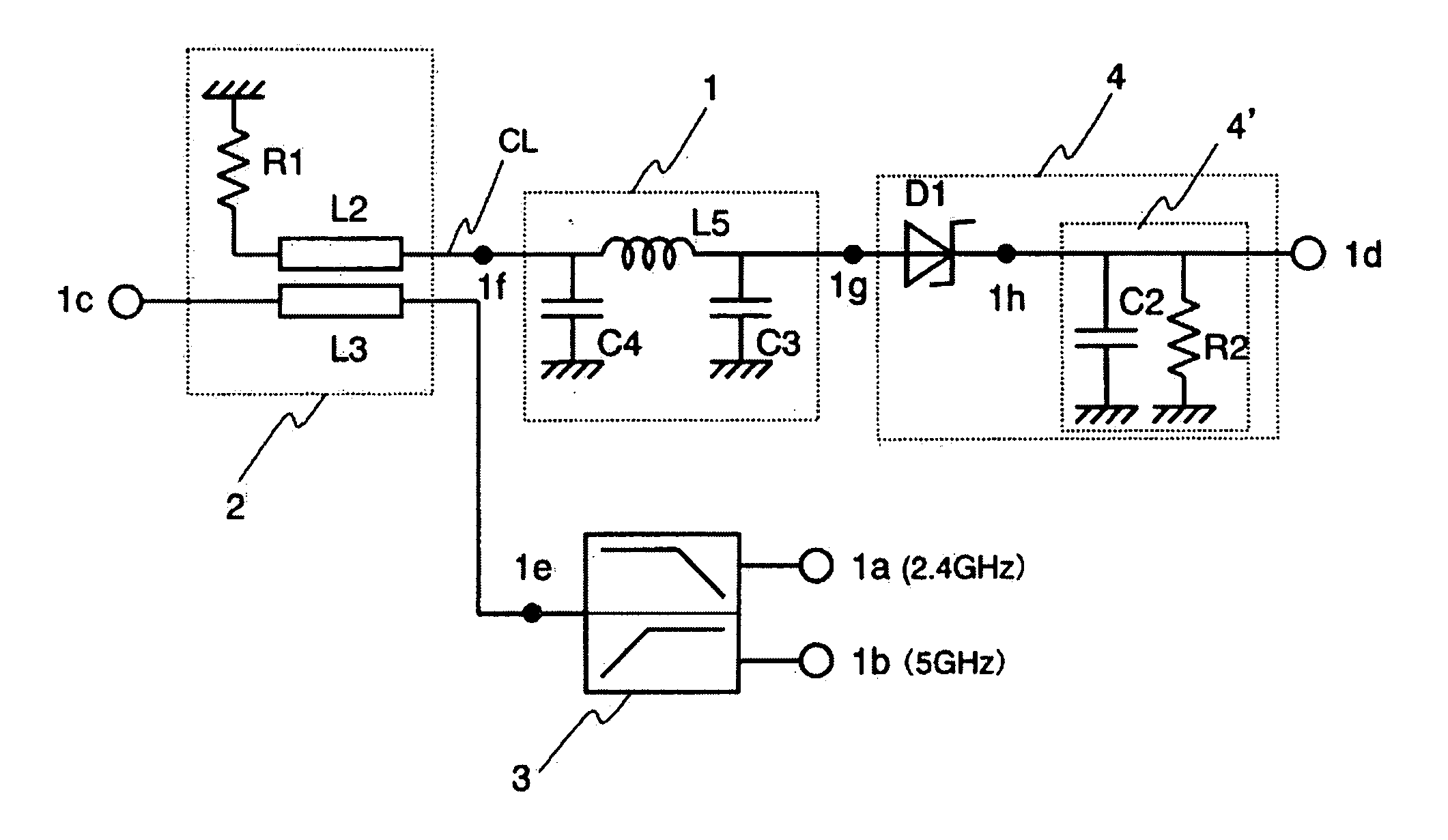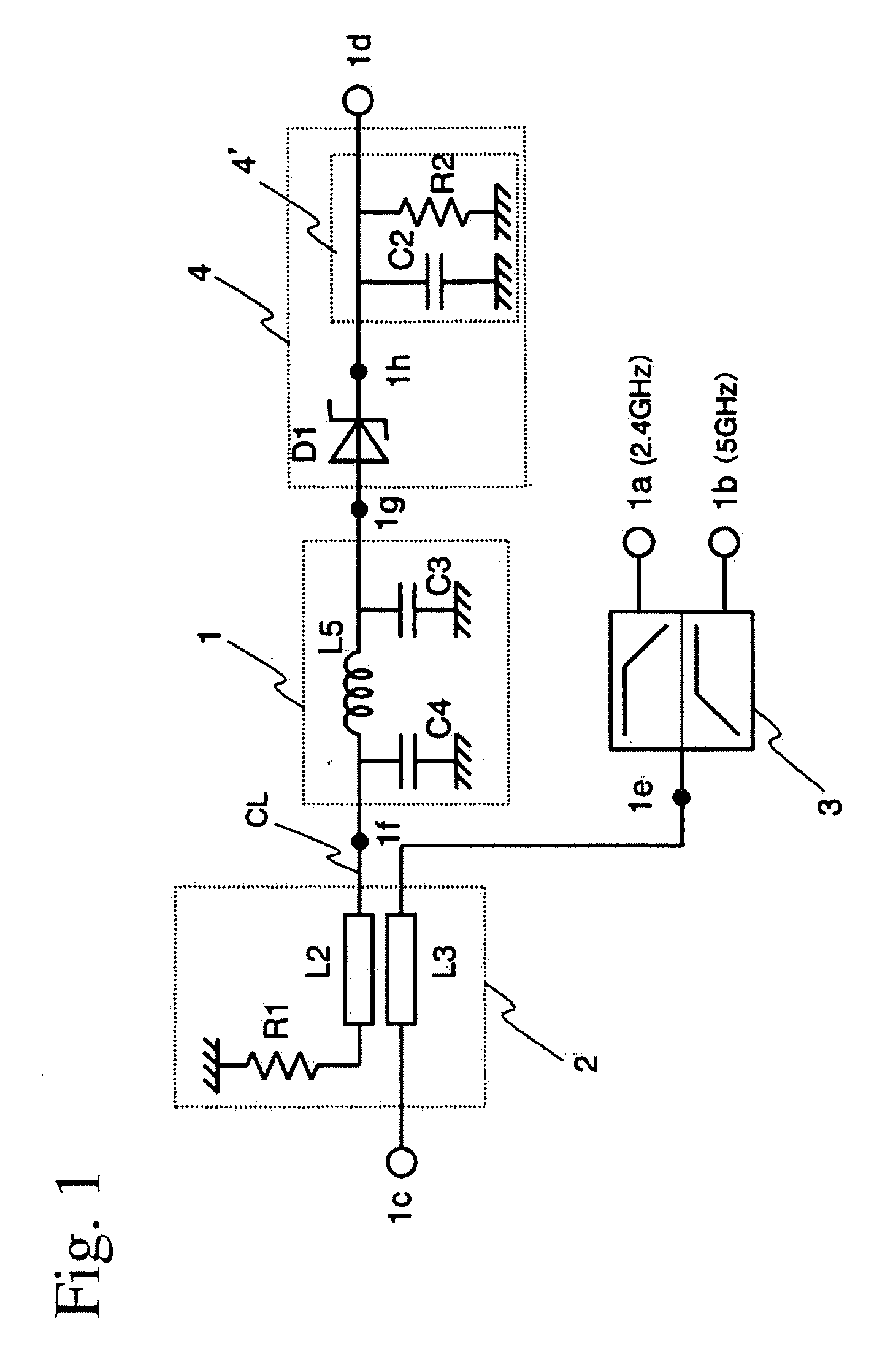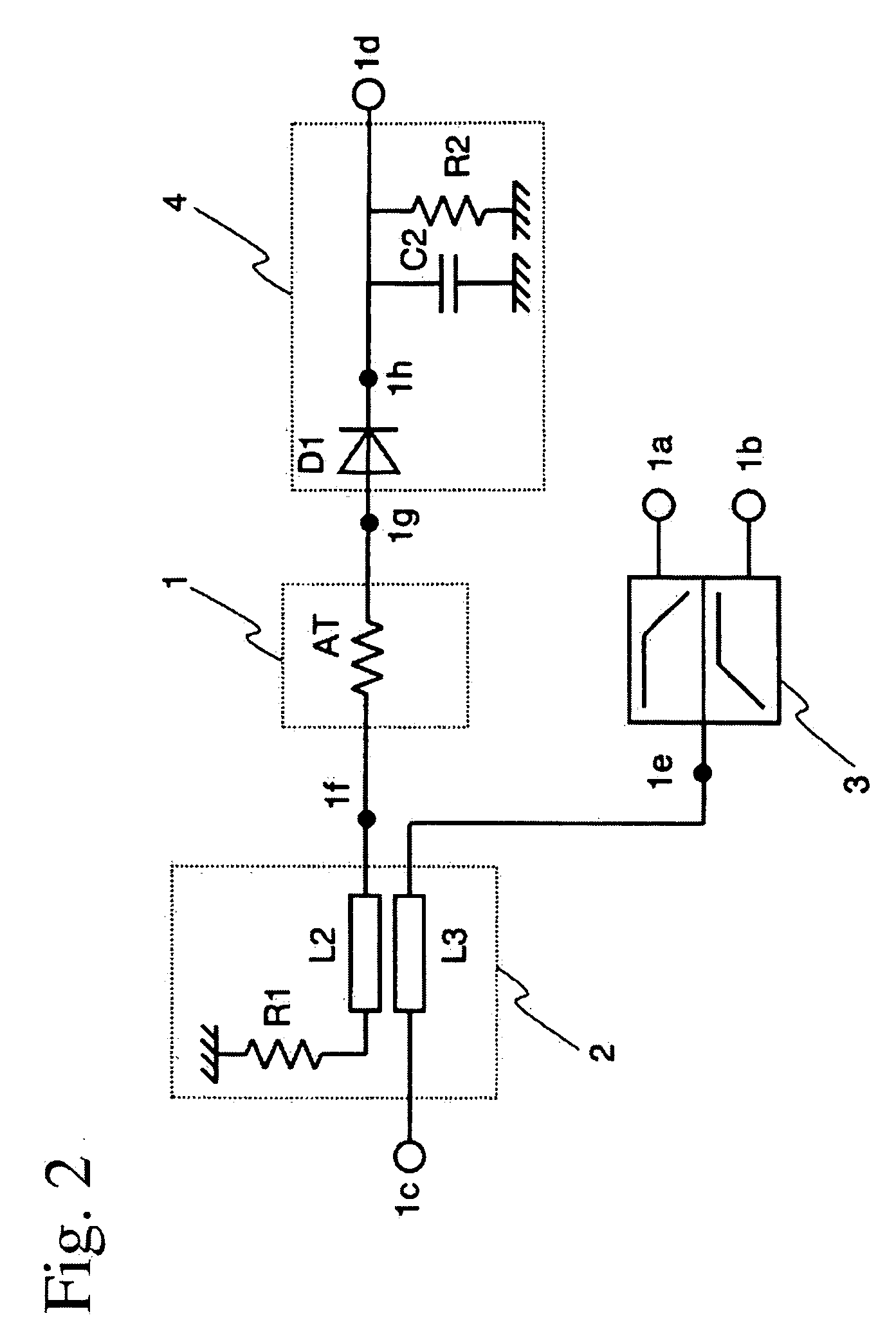High-frequency circuit and communications apparatus comprising same
a communication apparatus and high-frequency circuit technology, applied in electrical devices, transmission devices, coupling devices, etc., can solve the problems of extremely difficult to keep the relation between output power and detection voltage constant, and difficulty in reducing the size of communications apparatus, so as to reduce differences, reduce second harmonics, and reduce the effect of attenuation
- Summary
- Abstract
- Description
- Claims
- Application Information
AI Technical Summary
Benefits of technology
Problems solved by technology
Method used
Image
Examples
Embodiment Construction
[0037]FIG. 1 shows a high-frequency circuit according to one embodiment of the present invention. This high-frequency circuit comprises a diplexer 3, a coupler 2, a detector 4 comprising a detection diode D1 and a smoothing circuit 4′, and a harmonics-suppressing circuit 1 disposed between the coupler 2 and the detection diode D1. The diplexer 3 is constituted by a combination of a lowpass filter and a highpass filter, which are constituted, for instance, by LC circuits. The coupler 2 is constituted by a primary line L3, a secondary line L2 and a resistor R1. A coupling line CL on the side of the secondary line L2 of the coupler 2 is connected to the harmonics-suppressing circuit 1 and the detector 4 in series. The detection diode D1 in the detector 4 has an anode terminal 1g connected to the harmonics-suppressing circuit 1, and a cathode terminal 1h connected to the smoothing circuit 4′.
[0038] A transmission signal in a 2.4-GHz band (IEEE802.11b) and a transmission signal in a 5-G...
PUM
 Login to View More
Login to View More Abstract
Description
Claims
Application Information
 Login to View More
Login to View More - R&D
- Intellectual Property
- Life Sciences
- Materials
- Tech Scout
- Unparalleled Data Quality
- Higher Quality Content
- 60% Fewer Hallucinations
Browse by: Latest US Patents, China's latest patents, Technical Efficacy Thesaurus, Application Domain, Technology Topic, Popular Technical Reports.
© 2025 PatSnap. All rights reserved.Legal|Privacy policy|Modern Slavery Act Transparency Statement|Sitemap|About US| Contact US: help@patsnap.com



